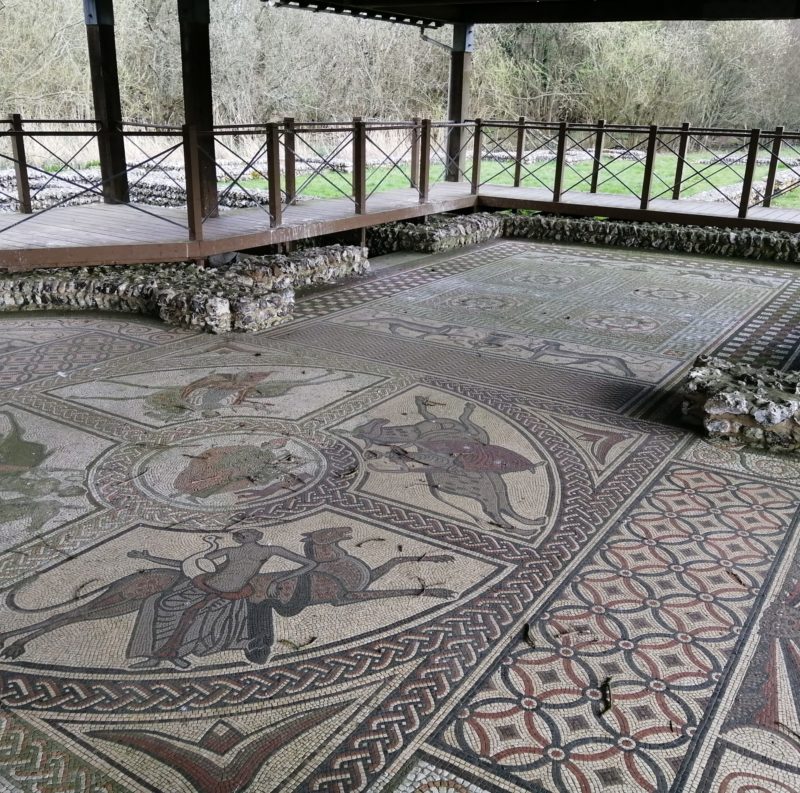An extensive and exceptional Roman villa with a significant mosaic on display to the public in the grounds of the estate
The villa was constructed from around AD 170. At around AD 360, earlier buildings were largely demolished and the site changed from being a large farm to become a ceremonial complex (or ‘Collegium’ – a sort of educational monastery) dedicated to the cult of Orpheus and Bacchus, a cult which went back to ancient Greece. By this time, the villa had become extensive, covering more than one hectare, among the largest in Britain. It had around 60 rooms, two bathhouses, many mosaic floors and several heated hypocausts. Most notably, it had a magnificent mosaic in a special hall dedicated to the ancient Greek legendary hero Orpheus, which you can still see today.
In 1727-8 William George discovered the Orpheus mosaic whilst digging post-holes, and it was reported as “the finest pavement that the sun ever shone upon in England”. An engraving and drawing were made and the villa was reburied. Its location eventually disappeared from memory until it was rediscovered in 1976 and the mosaic fully restored by 1980.
More details about the history of the villa are available on Hungerford Virtual Museum.
The site, situated on the banks of the River Kennet is open to the public. You can park very close by at Littlecote or why not walk from Ramsbury? There is a 5 mile circular walk from Ramsbury available to download on our website.


